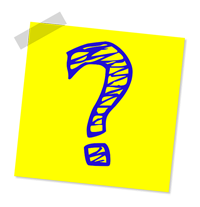12 months ago
·
by
Erin Carlson ·
0 comments
 This was a very wet winter for us. But spring is here and the flower super blooms are amazing. It’s a season of new beginnings, where flowers bloom, trees grow new leaves and the weather gets warmer. While this may be a time to celebrate and enjoy the beauty of nature, it’s important to remember that springtime can also bring potential risks and hazards that could result in property damage or personal injury. As such, it is essential to have insurance protection in place to mitigate any potential losses.
This was a very wet winter for us. But spring is here and the flower super blooms are amazing. It’s a season of new beginnings, where flowers bloom, trees grow new leaves and the weather gets warmer. While this may be a time to celebrate and enjoy the beauty of nature, it’s important to remember that springtime can also bring potential risks and hazards that could result in property damage or personal injury. As such, it is essential to have insurance protection in place to mitigate any potential losses.
Home insurance is one of the most important types of protection to consider during springtime. Heavy rainfall and strong winds are common during the spring season, and these can cause significant damage to your home. For instance, heavy rainfall could cause flooding or water damage to your home’s foundation, walls, or electrical systems. This could be costly to repair and could result in significant loss if not covered by insurance. Therefore, it is advisable to ensure that you have adequate insurance coverage for such eventualities.
Additionally, springtime can be a prime time for home improvement and renovation projects. From repairing leaky roofs to repainting walls, homeowners are often eager to spruce up their homes after a long winter. However, any construction or renovation work can potentially cause property damage, and it’s essential to have the right insurance coverage in place to protect against these risks. If you are planning on carrying out any renovations or remodeling work during springtime, it’s important to inform your insurance provider beforehand to ensure that you have adequate coverage for any potential damages.
Springtime is also a season of increased outdoor activities, such as gardening, barbecues, and sports. While these activities can be fun and exciting, they can also lead to personal injury or property damage. For instance, a gardening tool could accidentally cause injury to a neighbor, or a sports ball could break a window. In such cases, having liability insurance coverage can protect you from any legal or financial liability that may arise.
Similarly, springtime is also a time when many people start planning their vacations and road trips. Before embarking on any travel, it’s important to review your insurance policies and ensure that you have adequate coverage. This may include travel insurance, which can protect against any trip cancellations, medical emergencies, or lost luggage.
Springtime is a season of change and new beginnings, but it can also bring potential risks and hazards that could result in property damage or personal injury. As such, it’s important to have insurance protection in place to mitigate any potential losses. Home insurance, liability insurance, and travel insurance are just a few types of protection that should be considered during this time of year. By taking the necessary precautions and having the right insurance coverage in place, you can enjoy the beauty of springtime with peace of mind. Get in touch with us, your Scurich team is happy to help answer any questions.
Read more

Home invasions and vandalism is on the rise. As many as one in five homes are invaded annually in the United States. One tool thieves use is lock bumping. They use a bump or rapping key to unlock pin tumbler locks and gain access to your home. Learn about lock bumping as you take steps to secure your home and peace of mind.
How Lock Bumping Works
Typically, you can only open a door with a key that’s specific to that lock. The key’s design aligns with the lock, pushes the pins into place above the shear line and unlocks the door. A bump key is designed to also unlock a door except the thief inserts it into the keyhole and taps the key with a screwdriver or hammer. The bumping pushes the pins in the lock above the shear line and pops the lock.
Thieves can easily learn how to make a bump key thanks to numerous online how-to videos and instructions. With a collection of 10 different bump keys, they can open 90 percent of the doors in the U.S., and the entire process takes a few seconds. Tips That Protect Your Home From Lock Bumping
Protect your home and prevent lock bumping with several steps.
- Buy a different pin tumbler lock. Certain locks are harder to bump. When shopping for new locks, look for ones that are:
- Made with security pins
- Not made from hardened steel
- Designed with programmable side bars and not top pins
- Equipped with a trap pin
- Shallow drilled where one of the interior pins is slightly shallower than the others
- Change the spring tension. Stronger top springs in the lock make bumping harder, so ask a locksmith to make at least two of the top springs firmer.
- Replace the traditional pin tumbler lock. Instead, invest in a disk tumbler, time, combination, electronic or electromagnetic lock. They don’t contain pins and are less vulnerable to bumping.
- Reinforce existing locks. If you don’t want to replace all the locks in your home, replace the door’s metal strike plates. It mounts on the doorjamb and costs about $10.
- Lock your door always. Whether you’re hanging out at home, working in the yard or garage, going to work or taking an extended vacation, lock your doors. Don’t make it easy for a thief to enter your home!
Purchase adequate insurance. Homeowners and renters insurance won’t prevent lock bumping, but it can give you peace of mind. With the right insurance, you can replace any of your possessions that are lost, stolen or vandalized.
Your home’s security and peace of mind are vital. Understand and prevent lock bumping as you protect your home and family.
Read more
 Is your house going to be filled with guests this holiday season? Is your pantry filled? Are you ready? Do you have a dog? Do you need more insurance in case someone gets hurt while on your property?
Is your house going to be filled with guests this holiday season? Is your pantry filled? Are you ready? Do you have a dog? Do you need more insurance in case someone gets hurt while on your property?
What Does Homeowner’s Insurance Usually Cover?
Most homeowners buy insurance to cover property damages from storms or accidents. It also covers personal property that’s lost, damaged or stolen. Plus, homeowner’s insurance pays for medical treatment or lawsuits associated with injuries people sustain while visiting you.
Make Sure you Have Enough Liability Coverage
You don’t expect accidents to happen in your house, but a visitor could trip over frayed carpet, get food poisoning or fall off the backyard trampoline. Or maybe the traditional Thanksgiving day football game gets rough, and your cousin’s expensive watch breaks, a seasonal storm blows a branch on your friend’s vehicle or the toilet overflows on your uncle’s expensive leather shoes. These injuries and damages are all examples of accidents that liability insurance covers.
Increase Your Coverage Limit
To ensure you have enough liability coverage, check out your policy and talk to your insurance agent. Most policies include a liability coverage limit of $100,000, but you should consider increasing that limit to $300,000 or even $500,000. An accident that affects more than one guest could quickly use up that coverage and leave you with a big bill. The increased coverage limit ensures everyone can receive medical treatment, and it reduces your out-of-pocket expenses if you’re sued.
Buy an Umbrella Policy
An umbrella policy is another insurance product to consider. It adds additional coverage that could be very beneficial as you entertain guests this holiday season. It’s an inexpensive way to cover additional expenses (not covered by your home owners).
Because you plan to host holiday guests this year, do more than stock the pantry. Update your homeowner’s insurance policy. It gives you peace of mind and prepares you for anything that might happen. Get in touch with us if you have questions.
Read more
 June is the most popular month of the year for weddings, and you want your special day to be perfect. What happens, though, when things don’t go as planned? Purchase wedding liability insurance to cover your loss or hardship.
June is the most popular month of the year for weddings, and you want your special day to be perfect. What happens, though, when things don’t go as planned? Purchase wedding liability insurance to cover your loss or hardship.
Who Does Wedding Liability Insurance Protect?
The average wedding costs $20,000. Traditionally, the bride’s parents paid for the wedding. Today, though, the couple usually foots at least a portion of the bill. Protect your investment with wedding liability insurance.
This coverage can protect you and the venue, including the rehearsal dinner location and reception hall. Whether you get married in a traditional church or synagogue, plan a destination wedding or choose a nontraditional venue like a museum, park, zoo or forest, you can be covered if accidents happen.
What Does Wedding Liability Insurance Cover?
Accidents and other unfortunate incidents can wreak havoc on your wedding day.
- A guest may trip and injure himself while walking down the aisle before the ceremony.
- Someone may get sick after eating the shrimp cocktail appetizers.
- A bridesmaid might knock over an expensive item in the reception hall as she tries to catch the bouquet.
- One of your guests may drink too much and fall while dancing.
These and other accidents could result in expensive lawsuits or medical liabilities for you and your loved ones.
Purchase liability insurance to protect yourself. The policy gives you peace of mind that even if something happens, you have financial coverage. It’s not a fun expense like your dress, cake or rings, but it is important as you start your marriage on solid financial footing.
What are Some Features of Wedding Liability Insurance?
When choosing liability coverage, look for a policy that meets your needs. There are several features you may wish to consider.
- It should cover you, your soon-to-be spouse and both sets of parents.
- The locations of your rehearsal dinner, ceremony and reception should be covered for one low price.
- It can be purchased up to the day of your wedding.
- The coverage may include liquor liability to protect you and the venue against alcohol-related accidents.
- If you purchase coverage online, a certificate of insurance is emailed to the venue.
- You may receive a discount if you also purchase wedding cancellation insurance.
- The limit options should be flexible to meet your needs and budget.
Your insurance agent can discuss all these details with you as you choose the features that you want.
How do you get Wedding Liability Insurance?
Your insurance agent can provide you with this valuable coverage. Talk to him or her today about how to get a wedding liability insurance policy that protects you or your loved ones on that special day.
Read more
 If you’ve been working with your hands for any length of time, then you know that the difference between a professional job and a DIY project isn’t binary, it’s a spectrum. On one end, you’re taking your team out to build a house on a client’s property, and on the other end, you’re building a birdhouse in your garage just because it seemed like a fun way to kill an afternoon. In the middle, you’ve got storage sheds, home repairs, additional rooms, doghouses and so on. At some point along that spectrum, insuring your project becomes a necessity, either for legal or pragmatic reasons. But where exactly is that point? What kind of DIY projects do you need to get insured, and which ones can you afford to not worry about?
If you’ve been working with your hands for any length of time, then you know that the difference between a professional job and a DIY project isn’t binary, it’s a spectrum. On one end, you’re taking your team out to build a house on a client’s property, and on the other end, you’re building a birdhouse in your garage just because it seemed like a fun way to kill an afternoon. In the middle, you’ve got storage sheds, home repairs, additional rooms, doghouses and so on. At some point along that spectrum, insuring your project becomes a necessity, either for legal or pragmatic reasons. But where exactly is that point? What kind of DIY projects do you need to get insured, and which ones can you afford to not worry about?
You have a few main concerns, here:
- Are you investing more than you can afford to lose?
- Is liability a concern?
- Will this affect any existing insurance policies you hold?
Take, for instance, building an additional room onto your home. This is going to have an effect on your existing homeowner’s policy, and if you don’t inform your insurer about your project, you may wind up invalidating that policy altogether.
On the other hand, spending a weekend erecting a doghouse in your backyard probably won’t affect your homeowner’s policy at all, and you’re probably not spending more than a hundred dollars on lumber and other materials. You may even be piecing it together from scrap wood left over from another project. The only concern here is liability, which might or might not be covered by your current homeowner’s policy. To play it safe you can always build a doghouse in the garage and wheel it out to the yard on a dolly to make sure you don’t wind up with barbecue guests stepping on a nail or something, but it’s generally worth checking your policy before starting any such project, just to be sure.
There are projects that may be covered by your homeowner’s policy in terms of liability, but wind up costing a little more than piecing a doghouse together out of scrap lumber. A shed, for instance, or costly home improvements. In these instances it’s down to peace of mind. Are you comfortable working without insurance, or would you like to have a safety net just in case?
If you’re bringing other people onto a project, then of course you’re probably going to want some basic liability coverage, but for more DIY projects than not, the rule of thumb is not to worry about insurance unless you feel uncomfortable without it, it’s required by law as with larger structures like guest homes, or it’s affecting a policy you already hold.
Read more
 There are many hidden costs associated with owning a boat: Dock fees, general maintenance, and winter storage, just to name a few. One expense that boat owners should never skimp on is purchasing the best available insurance policy for their watercraft.
There are many hidden costs associated with owning a boat: Dock fees, general maintenance, and winter storage, just to name a few. One expense that boat owners should never skimp on is purchasing the best available insurance policy for their watercraft.
Because buying a boat is a huge investment, owners should protect their boat with comprehensive insurance coverage. Plans are often based on the type and size of the boat. Many Homeowners and Renters insurance policies provide limited coverage for property damage if the boat’s engine is less than 25 mph horsepower or if it is a small sailboat, but without additional insurance, no liability coverage is included.
Owners of larger, more powerful boats and yachts will need to purchase a separate insurance policy for their boat. The insurance company will take into account the size and type of boat, its value, and where the boat sails when drawing up the conditions and cost of the policy.
Separate boat and watercraft insurance policies provide much more coverage to the owner. These policies generally include loss and damage coverage to the boat’s hull, machinery, furnishings, fittings, and any permanently attached equipment, like a navigation system. Liability coverage is extended to:
- Bodily injury to other persons
- Damage to other’s property
- Legal expenses associated with non-consensual operation of the boat
- Medical costs for injuries to the owner and passenger
- Boat theft
Policyholders can choose the liability limits of their plan, ranging anywhere from $15,000 up to $300,000. The deductible cost for property damage is $250, and it ranges between $500 and $1,000 for theft and medical expenses. Of course, policies can be individualized based on the boat owner’s needs. Other endorsements and coverages can be added to the policy to cover the boat’s trailer, fishing gear kept aboard the boat, and any other accessories. Also, make sure to ask whether or not the policy covers the boat while it is being towed.
Just as Auto insurance providers offer discounts to their policyholders, discounts for watercraft policies apply in certain cases. For example, insurance companies favor diesel-powered engines over gasoline ones because diesel fuel is more stable, making the engine safer to operate.
Other discounts are related to safety equipment kept on the boat. Having items like fire extinguishers approved by the U.S. Coast Guard and ship-to-shore radio equipment could reduce the amount of the premium. Also, completing a boater’s safety course offered by the Coast Guard Auxiliary, the American Red Cross, or the U.S. Power Squadrons can gain some favor with the insurance company. Maintaining a clean boating record is just as important as being accident-free on the roadways, when it comes to lowering insurance rates. Premiums are usually discounted for every two years the boater goes without an accident or filing a claim. Bundling your Watercraft insurance with Homeowners and vehicle policies is another good way to save money on coverage costs.
A solid insurance policy gives boaters the peace of mind needed to set sail and enjoy the open waters. Nothing is more relaxing than knowing your investment is covered. Get in touch if you have questions.
Read more
 This was a very wet winter for us. But spring is here and the flower super blooms are amazing. It’s a season of new beginnings, where flowers bloom, trees grow new leaves and the weather gets warmer. While this may be a time to celebrate and enjoy the beauty of nature, it’s important to remember that springtime can also bring potential risks and hazards that could result in property damage or personal injury. As such, it is essential to have insurance protection in place to mitigate any potential losses.
This was a very wet winter for us. But spring is here and the flower super blooms are amazing. It’s a season of new beginnings, where flowers bloom, trees grow new leaves and the weather gets warmer. While this may be a time to celebrate and enjoy the beauty of nature, it’s important to remember that springtime can also bring potential risks and hazards that could result in property damage or personal injury. As such, it is essential to have insurance protection in place to mitigate any potential losses.

 Is your house going to be filled with guests this holiday season? Is your pantry filled? Are you ready? Do you have a dog? Do you need more insurance in case someone gets hurt while on your property?
Is your house going to be filled with guests this holiday season? Is your pantry filled? Are you ready? Do you have a dog? Do you need more insurance in case someone gets hurt while on your property? June is the most popular month of the year for weddings, and you want your special day to be perfect. What happens, though, when things don’t go as planned? Purchase wedding liability insurance to cover your loss or hardship.
June is the most popular month of the year for weddings, and you want your special day to be perfect. What happens, though, when things don’t go as planned? Purchase wedding liability insurance to cover your loss or hardship. If you’ve been working with your hands for any length of time, then you know that the difference between a professional job and a DIY project isn’t binary, it’s a spectrum. On one end, you’re taking your team out to build a house on a client’s property, and on the other end, you’re building a birdhouse in your garage just because it seemed like a fun way to kill an afternoon. In the middle, you’ve got storage sheds, home repairs, additional rooms, doghouses and so on. At some point along that spectrum, insuring your project becomes a necessity, either for legal or pragmatic reasons. But where exactly is that point? What kind of DIY projects do you need to get insured, and which ones can you afford to not worry about?
If you’ve been working with your hands for any length of time, then you know that the difference between a professional job and a DIY project isn’t binary, it’s a spectrum. On one end, you’re taking your team out to build a house on a client’s property, and on the other end, you’re building a birdhouse in your garage just because it seemed like a fun way to kill an afternoon. In the middle, you’ve got storage sheds, home repairs, additional rooms, doghouses and so on. At some point along that spectrum, insuring your project becomes a necessity, either for legal or pragmatic reasons. But where exactly is that point? What kind of DIY projects do you need to get insured, and which ones can you afford to not worry about? There are many hidden costs associated with owning a boat: Dock fees, general maintenance, and winter storage, just to name a few. One expense that boat owners should never skimp on is purchasing the best available insurance policy for their watercraft.
There are many hidden costs associated with owning a boat: Dock fees, general maintenance, and winter storage, just to name a few. One expense that boat owners should never skimp on is purchasing the best available insurance policy for their watercraft.